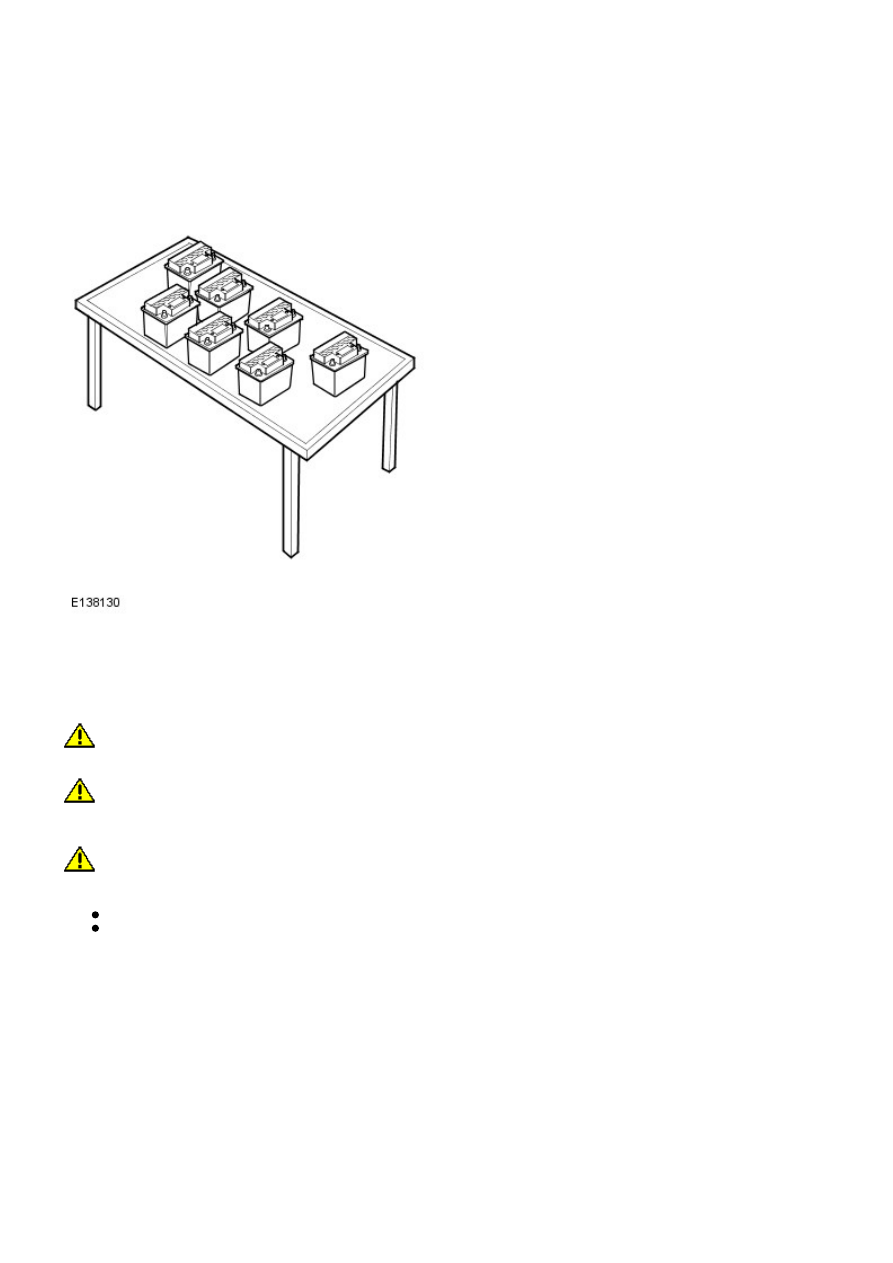Frelander 2. Manual - part 455

6. BATTERY CHARGING AND MAINTENANCE
BATTERY CHARGING
It is essential that a suitably ventilated defined area exists in each dealership / retailer for battery charging. Likewise, an
area should be allotted for scrap batteries, and clearly indicated as such. It is recommended that dealers / retailers always
have fully charged batteries ready for use. However the battery MUST BE tested and charged if necessary every month, and
charged after three months irrespective of any test.
• CAUTIONS:
Batteries must be re-charged after a maximum of 3 months storage (see Storage History sheet in the New Vehicle
Storage Manual).
It is very important that when charging batteries using the traction charger or other stand-alone chargers that the
charger is set for the correct type of battery before charging commences. If the wrong switch is selected the result would
be a battery that is not charged fully and / or overheating can occur. Follow the manufacturers operating instructions.
Do not charge AGM batteries with voltages over 14.8 volts as this will damage the battery.
To bring a serviceable but discharged battery back to a fully charged condition proceed as follows:
Check and if necessary top-up the battery electrolyte level.
Charge the battery using the Midtronics Diagnostic Charger (USA) or Traction Charger (all other markets) following
the manufacturers operating instructions.
• NOTE: When using the Midtronics Diagnostic Charger, automatic mode must always be used. After charging and analysis,
the charger may display ‘Top-Off Charging’, press STOP to end. Do not stop charging until the current falls to 5A or less,
otherwise the battery will not be fully charged.
POST-CHARGE TEST METHODS
New Batteries, Batteries in Storage and In-Service Batteries
The purpose of this test is to ensure that the charging process has fully charged the battery.
• NOTE: IT IS RECOMMENDED THAT THIS TEST IS CONDUCTED AT LEAST 24 HOURS AFTER THE CHARGE CYCLE IS
COMPLETED.